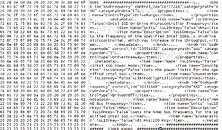- Joined
- Oct 9, 2007
- Messages
- 47,297 (7.53/day)
- Location
- Hyderabad, India
| System Name | RBMK-1000 |
|---|---|
| Processor | AMD Ryzen 7 5700G |
| Motherboard | ASUS ROG Strix B450-E Gaming |
| Cooling | DeepCool Gammax L240 V2 |
| Memory | 2x 8GB G.Skill Sniper X |
| Video Card(s) | Palit GeForce RTX 2080 SUPER GameRock |
| Storage | Western Digital Black NVMe 512GB |
| Display(s) | BenQ 1440p 60 Hz 27-inch |
| Case | Corsair Carbide 100R |
| Audio Device(s) | ASUS SupremeFX S1220A |
| Power Supply | Cooler Master MWE Gold 650W |
| Mouse | ASUS ROG Strix Impact |
| Keyboard | Gamdias Hermes E2 |
| Software | Windows 11 Pro |
It could soon become possible to overclock the controller and NAND flash of your SSD, if Intel has its way. The company is set to demonstrate how to overclock Intel-branded SSDs using its Xtreme Tuning Utility (XTU), at IDF 2013, which goes underway this September. The item on Intel's IDF itinerary marked "AIOS001" deals with seminars on overclocking Intel's next-generation HEDT (high-end desktop) platforms. X-bit Labs believes Intel could talk about SSD overclocking during that session.
Options to tweak SSDs were discovered when poking around the code of an unreleased XTU version. XTU is a unified software utility by Intel, which lets you tweak CPU, memory, and system cooling on systems running Intel Desktop Boards. Among the things end-users should be able to tweak, apart from the controller clock-speed, are the NAND flash bus-speed. Taking away interface overheads and other round-offs, 560 MB/s appears to be the practical maximum bandwidth SATA 6 Gb/s SSDs have been able to achieve. It could always be handy getting your SSD a few dozen more MB/s sequential speeds at the expense of stability.

View at TechPowerUp Main Site
Options to tweak SSDs were discovered when poking around the code of an unreleased XTU version. XTU is a unified software utility by Intel, which lets you tweak CPU, memory, and system cooling on systems running Intel Desktop Boards. Among the things end-users should be able to tweak, apart from the controller clock-speed, are the NAND flash bus-speed. Taking away interface overheads and other round-offs, 560 MB/s appears to be the practical maximum bandwidth SATA 6 Gb/s SSDs have been able to achieve. It could always be handy getting your SSD a few dozen more MB/s sequential speeds at the expense of stability.

View at TechPowerUp Main Site











